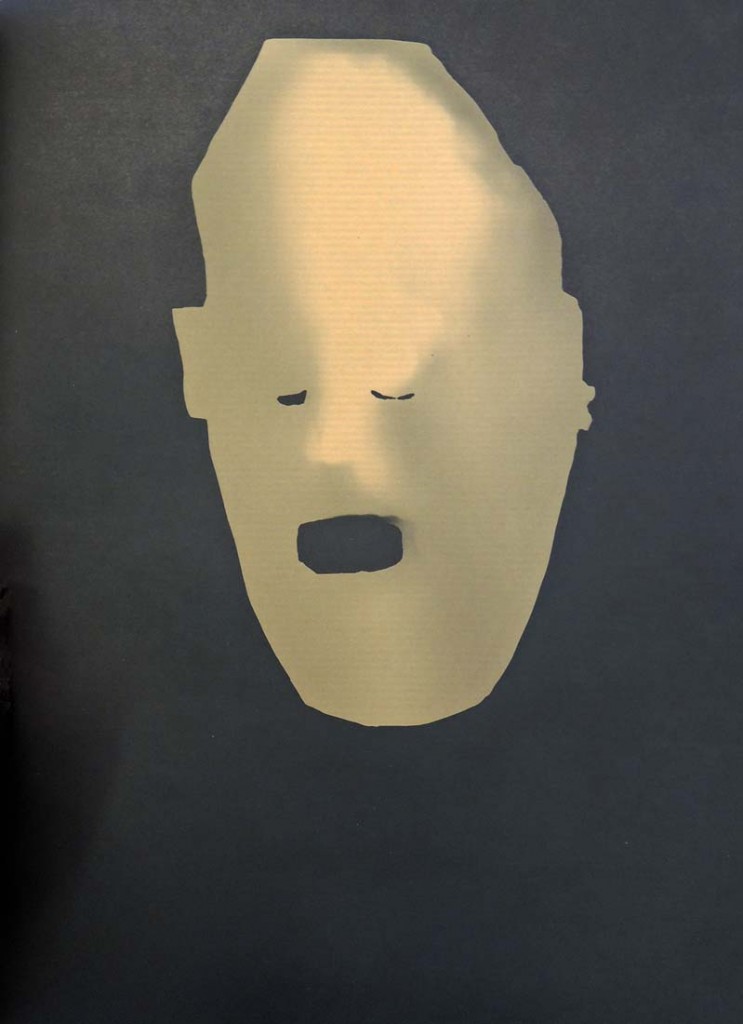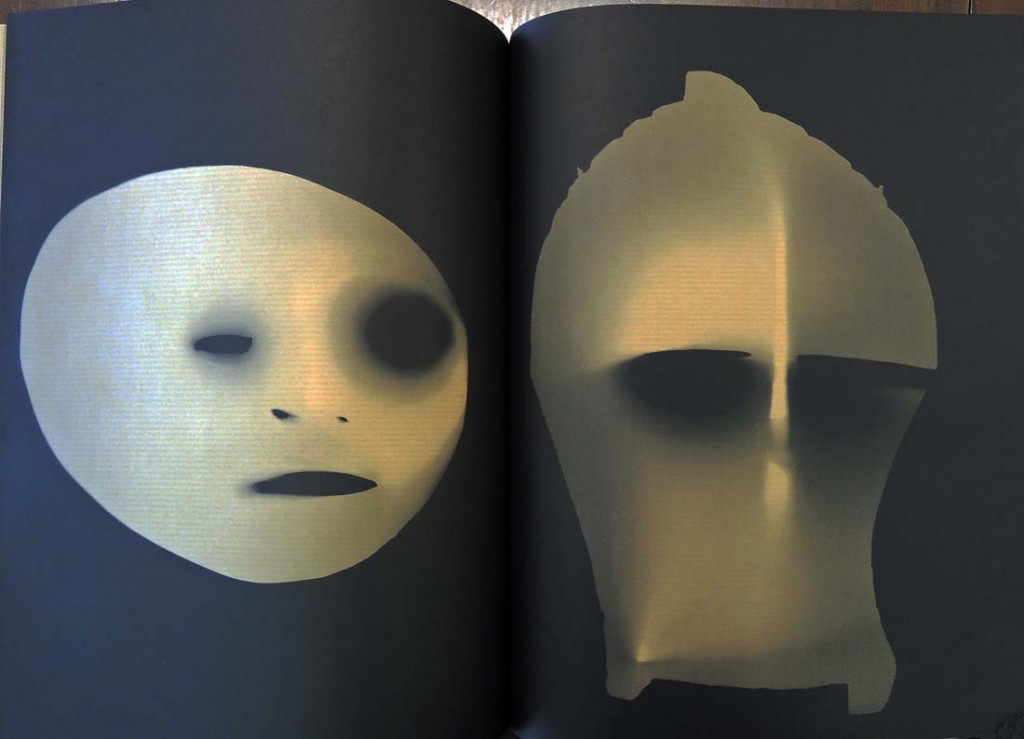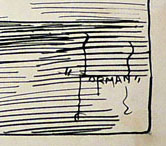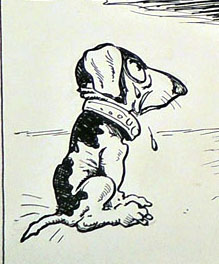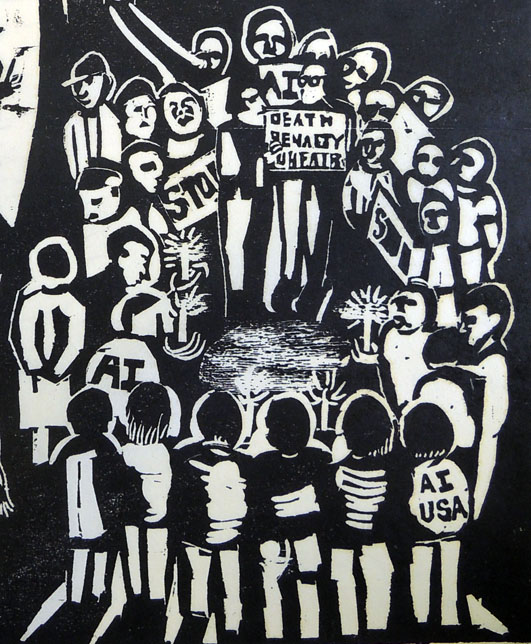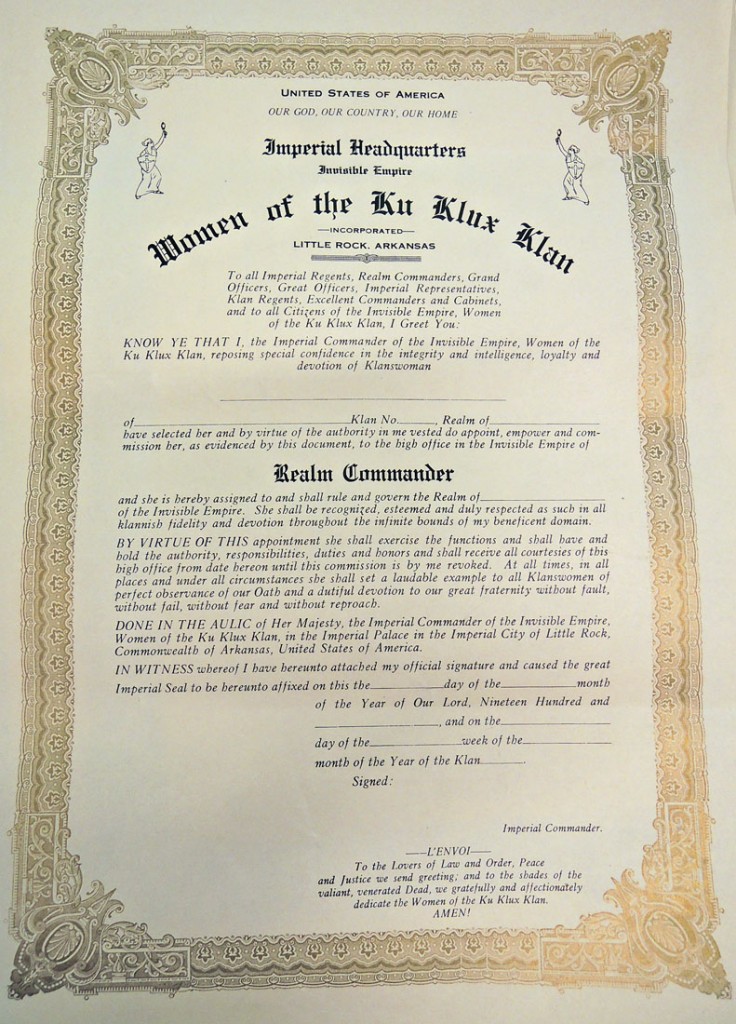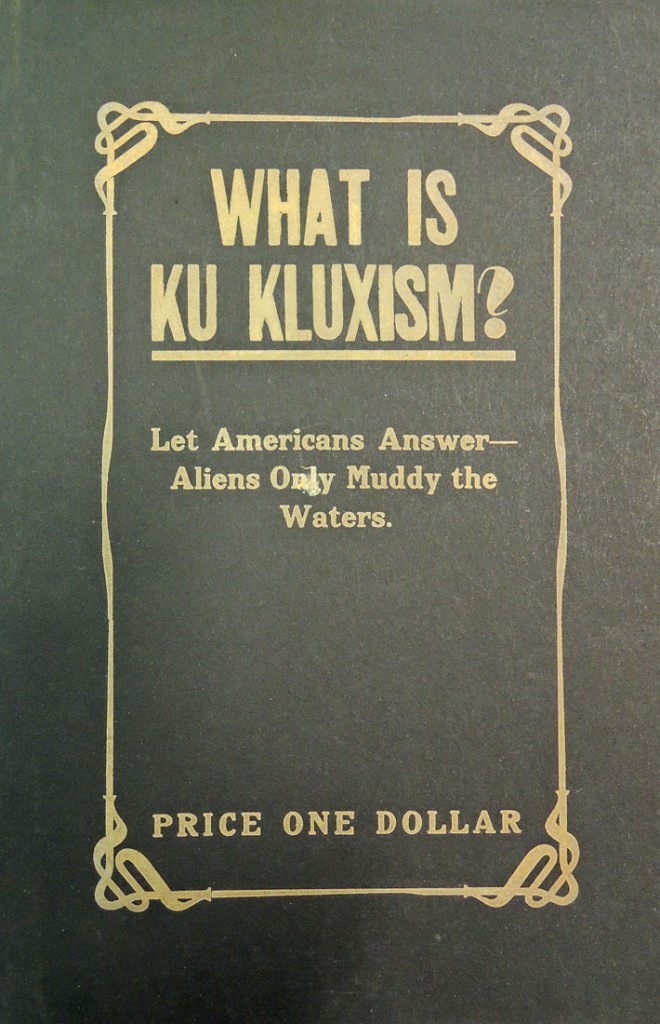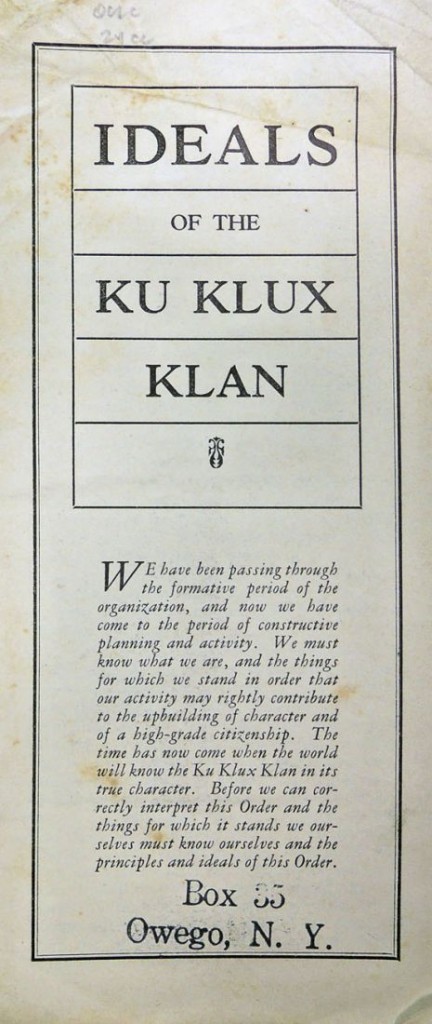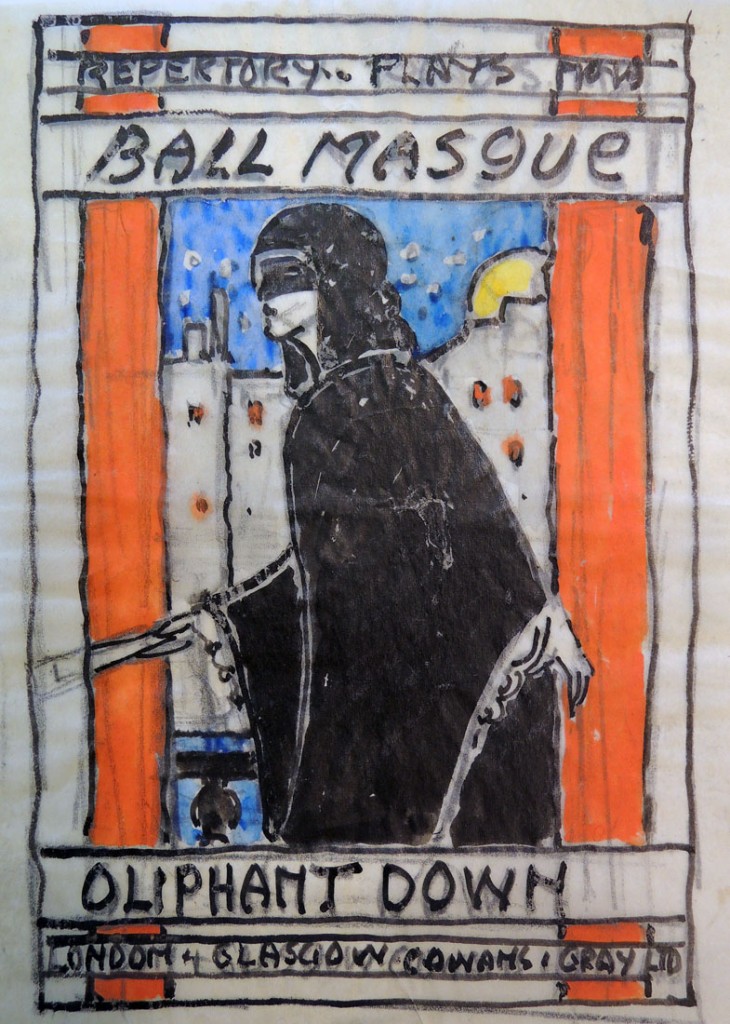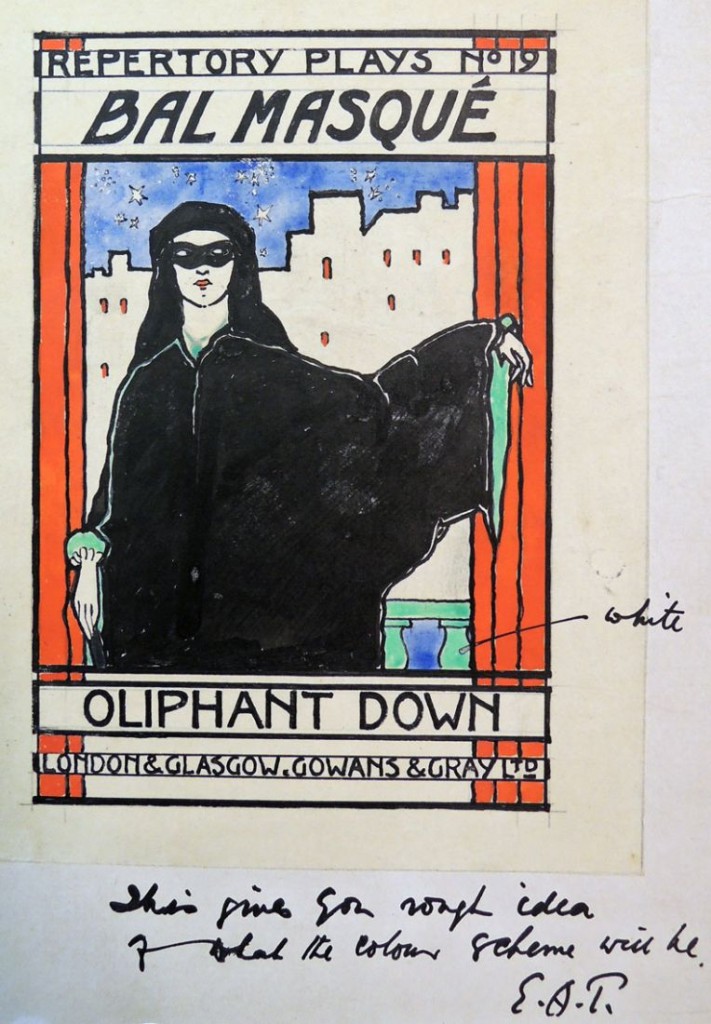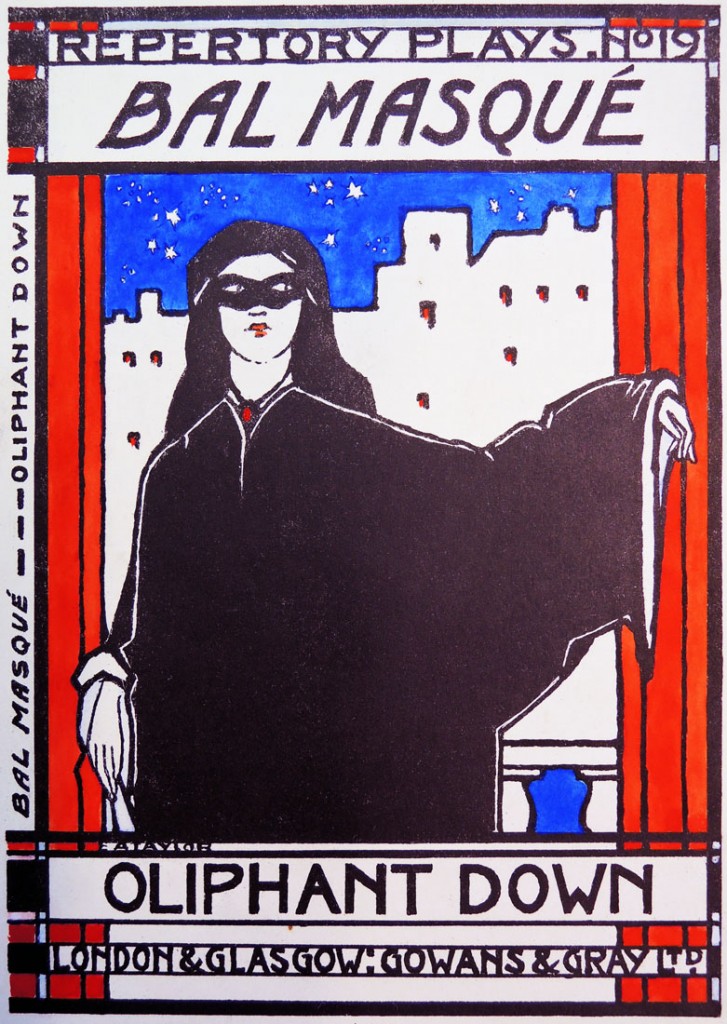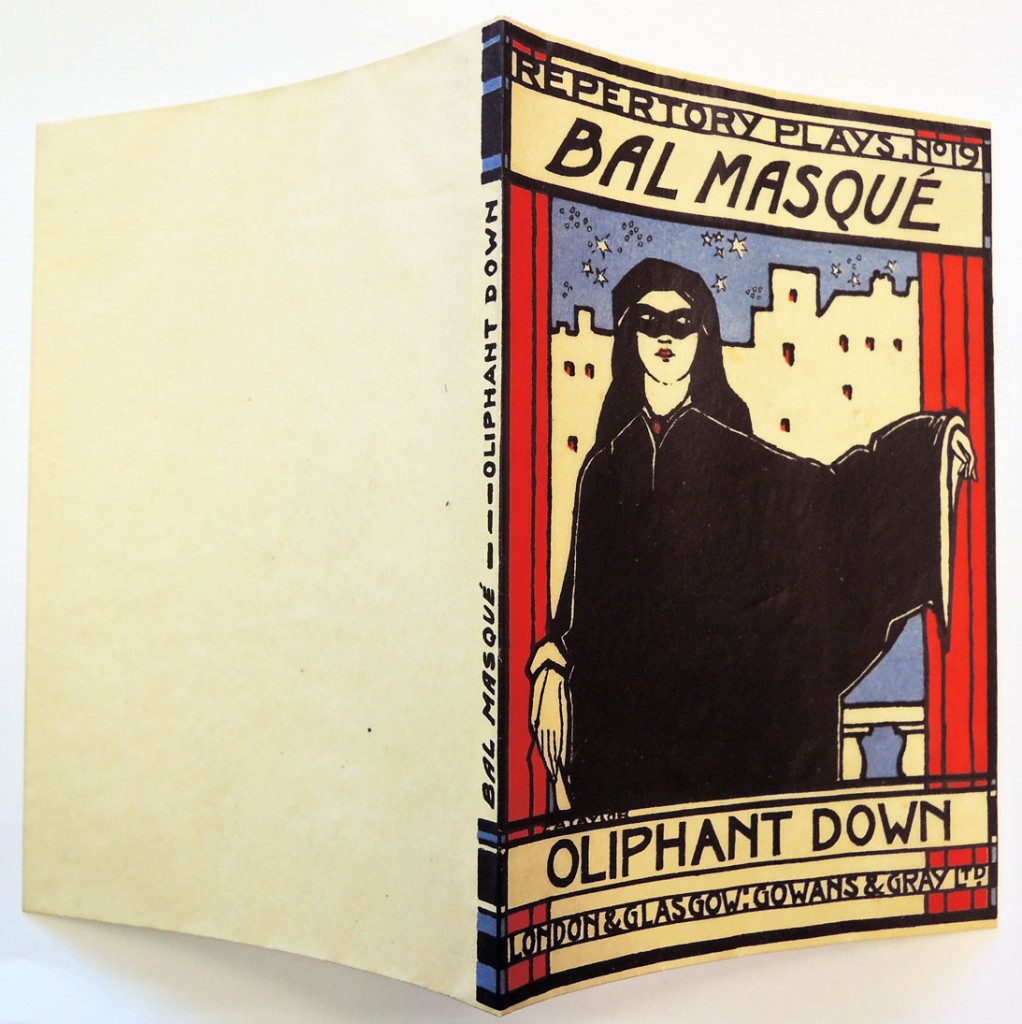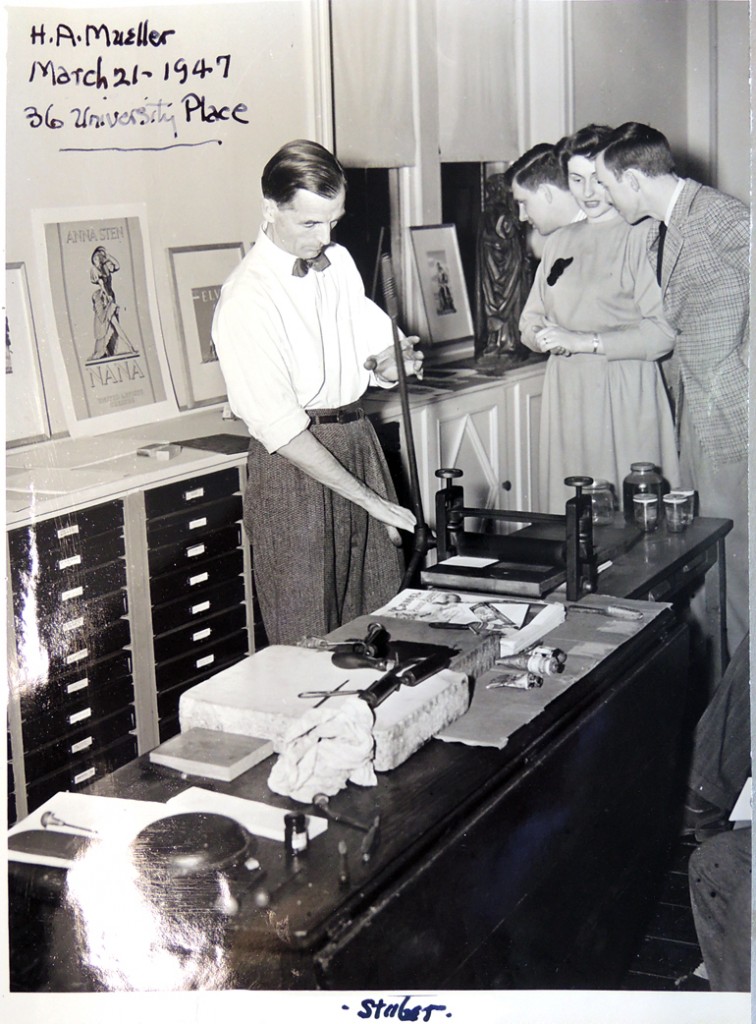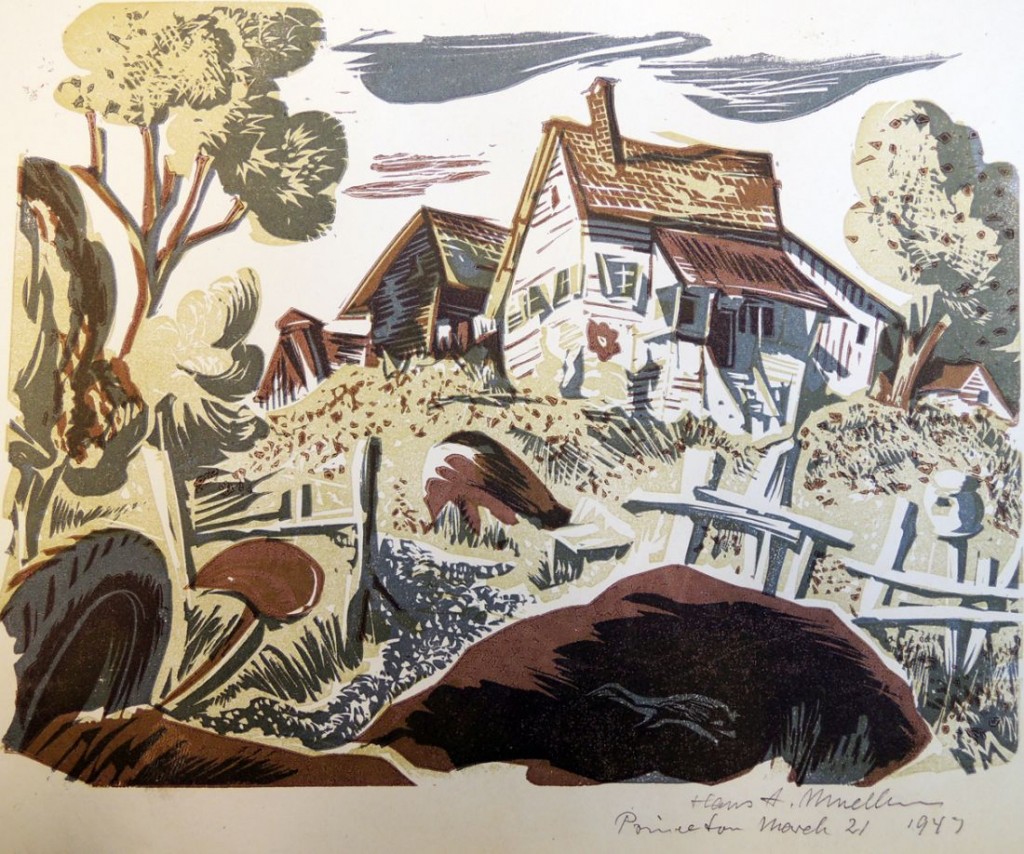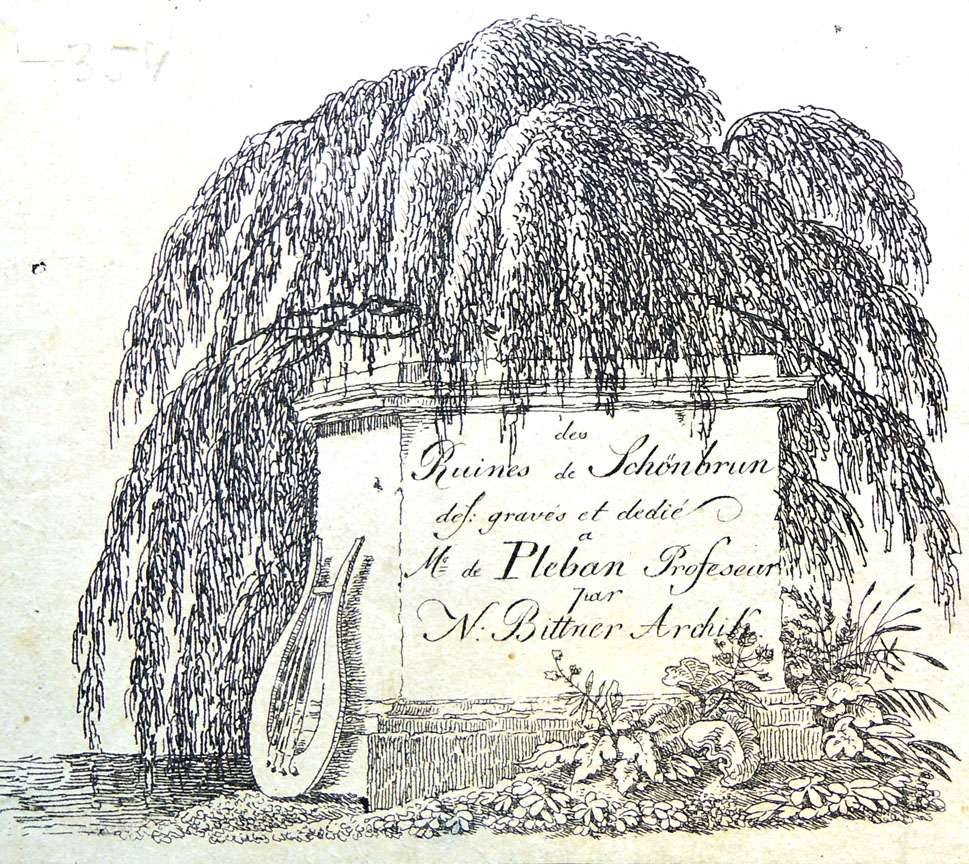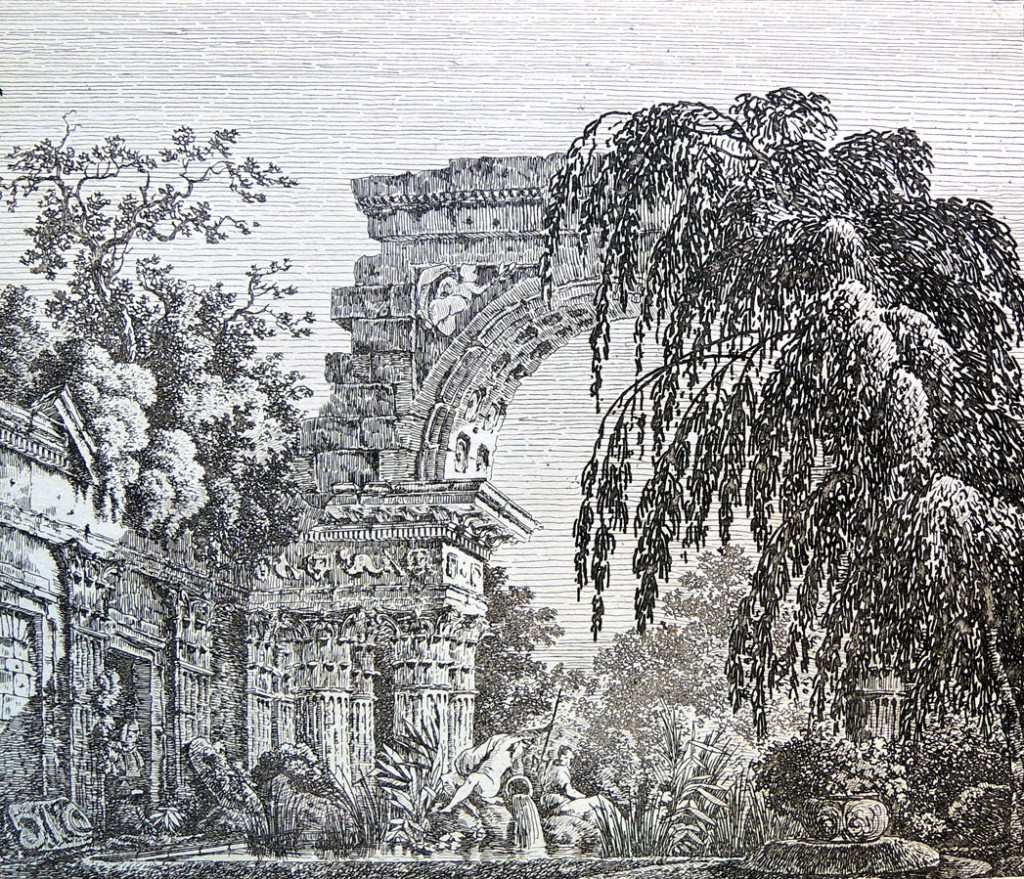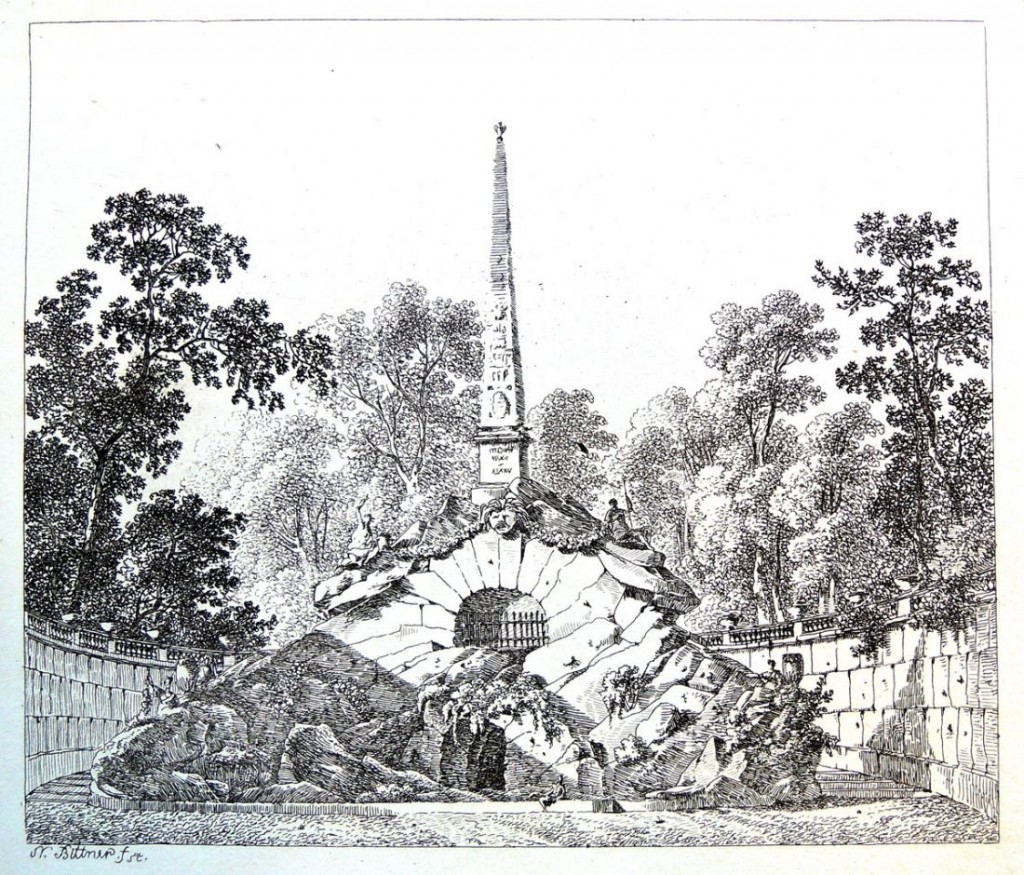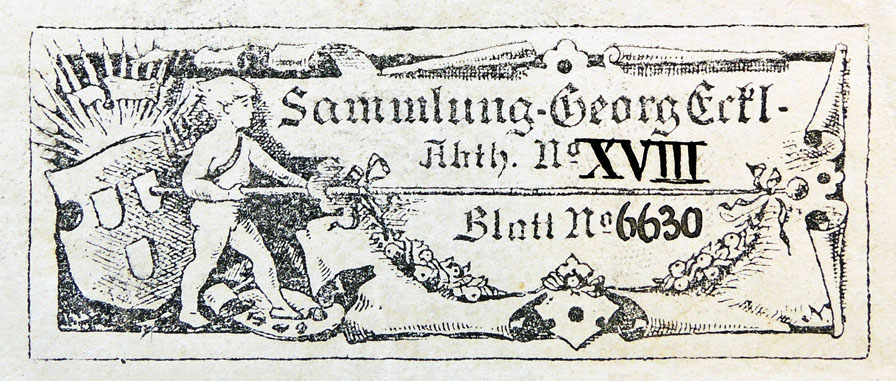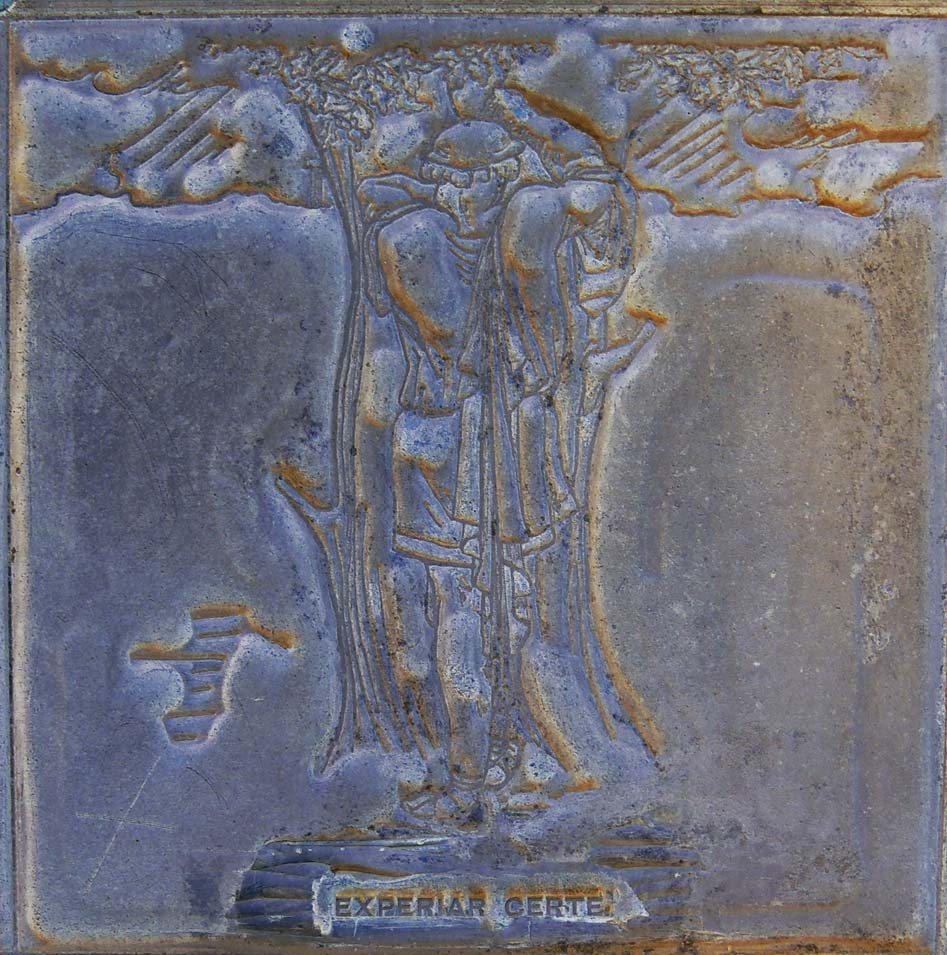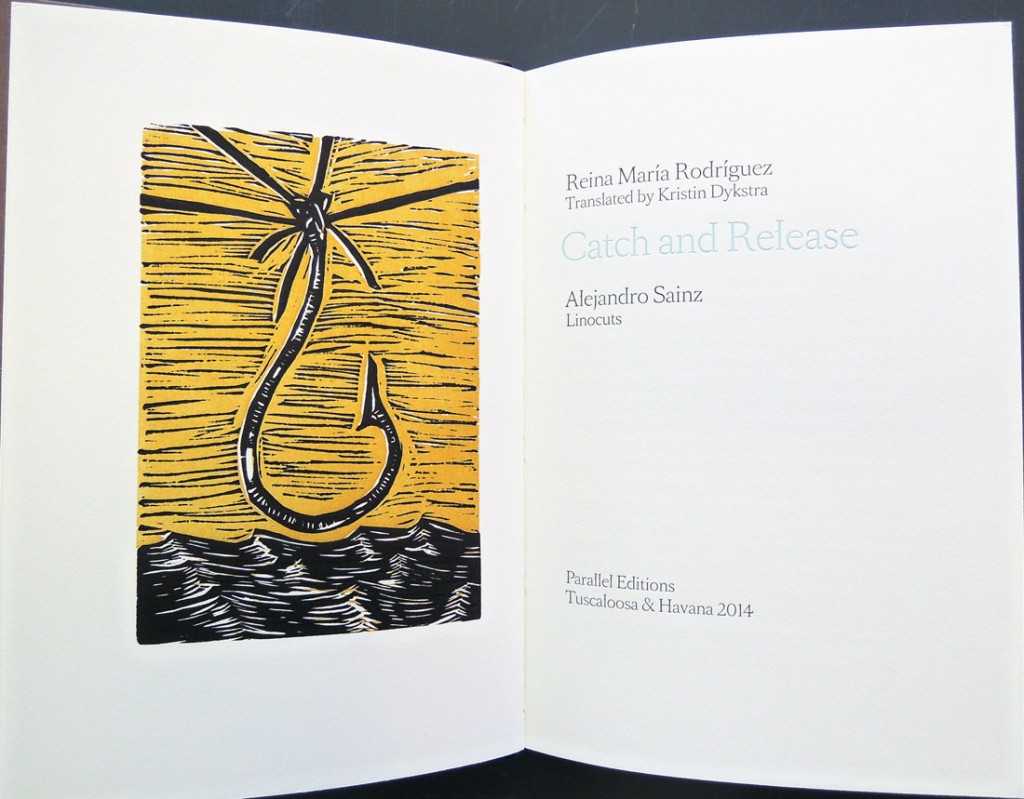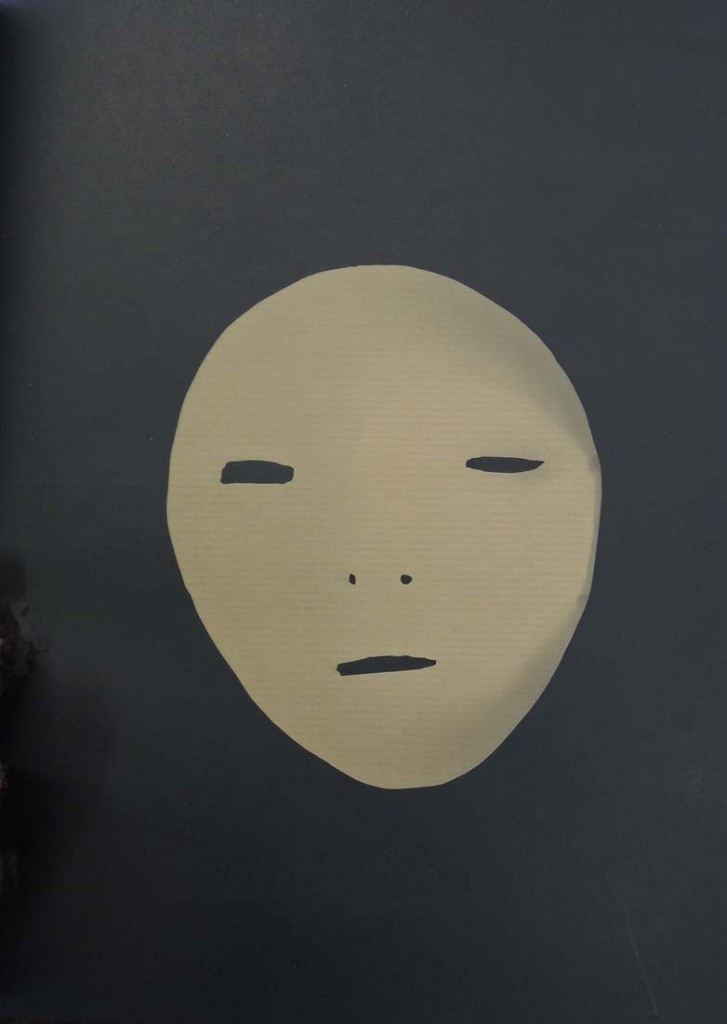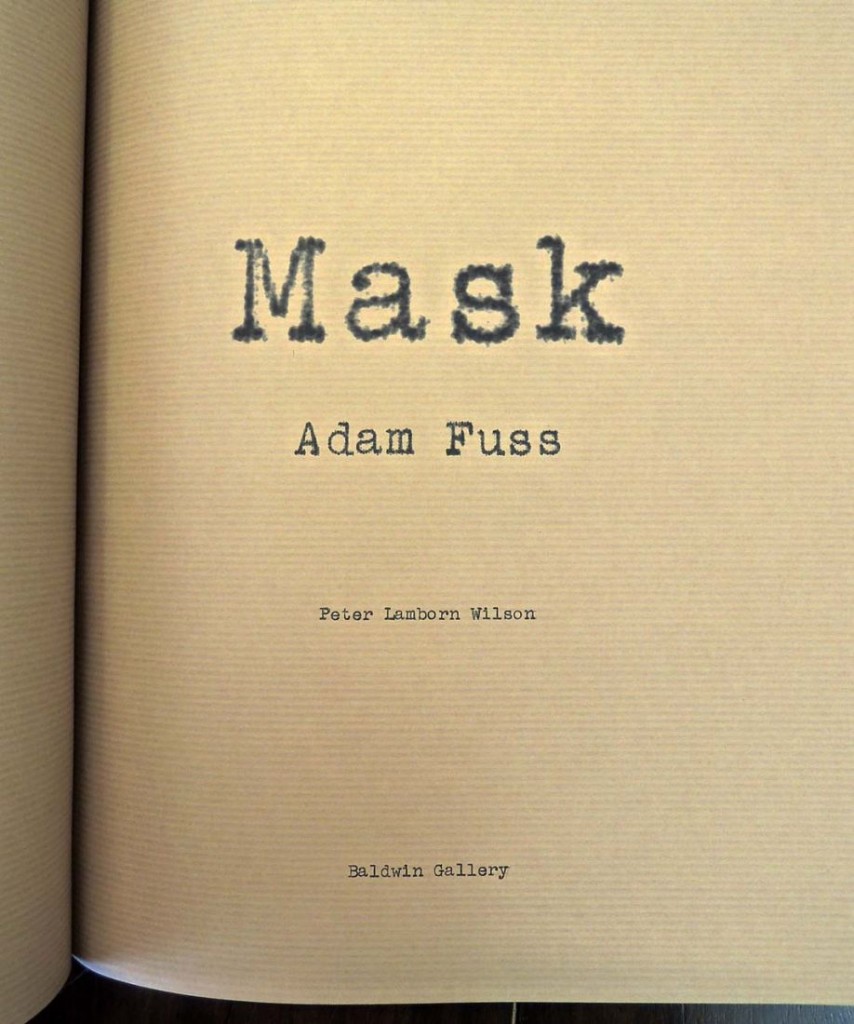 The Graphic Arts Collection recently acquired this great pen and ink drawing for an early 20th century newspaper cartoon (note: 3 columns wide). But who’s Norman? If anyone has a clue to the illustrator of this drawings, could you let us know? Thanks.
The Graphic Arts Collection recently acquired this great pen and ink drawing for an early 20th century newspaper cartoon (note: 3 columns wide). But who’s Norman? If anyone has a clue to the illustrator of this drawings, could you let us know? Thanks.
Category Archives: Acquisitions
Eric Avery
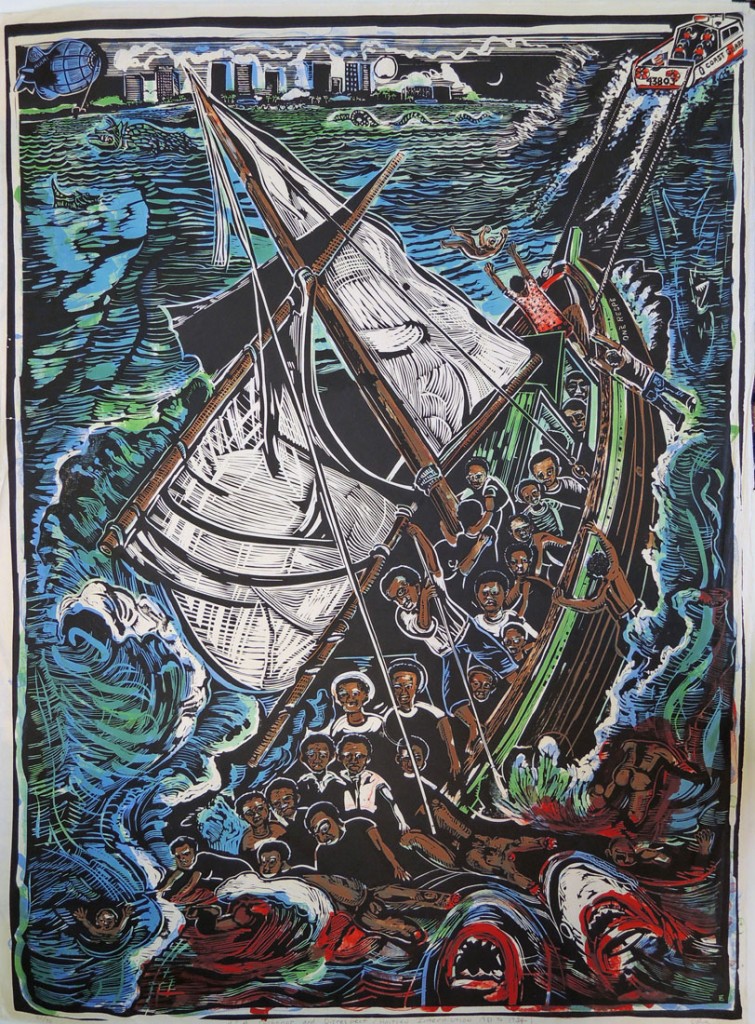
Eric Avery, USA Dishonor and Disrespect (Haitian Interdiction 1981-1994), 1991. Linoleum block print on a seven-color lithograph printed on mold made Okawara paper. 46½ x 34 inches. Edition: 30. Graphic Arts Collection 2014- in process.
We are delighted to have several new prints and artists books in the Graphic Arts Collection by Eric Avery, a Texas physician/artist who moved to New Hope in 2013 after retiring from working as a psychiatrist in a large HIV/AIDS clinic for twenty years. Doctor Avery has made a career incorporating his medical practice with his activist art, delving into such themes as infectious diseases, human rights abuse, and the death penalty, among others. Many of his complex prints appropriate one or more iconic art historical images into contemporary events. Here are a few examples now at Princeton University.
On July 14, 1990, The New York Times reported, “Bahamas Facing More Questions As It Buries 39 Drowned Haitians.” The story continued “Thirty-nine Haitians fleeing their impoverished Caribbean island drowned when their sailboat capsized and sank in choppy seas while being towed by Bahamian authorities, Government officials said. No explanation for what caused the sinking was given.”
Published by the Tamarind Institute, Avery’s complex linocut [above] incorporates the facts of the 1990 tragedy with three separate art historical paintings: Theodore Gericault’s The Raft of the Medusa, 1824; John Singleton Copley’s Watson and the Shark, 1778; and Rembrandt’s Christ in the Storm on the Sea of Galilee, 1633.
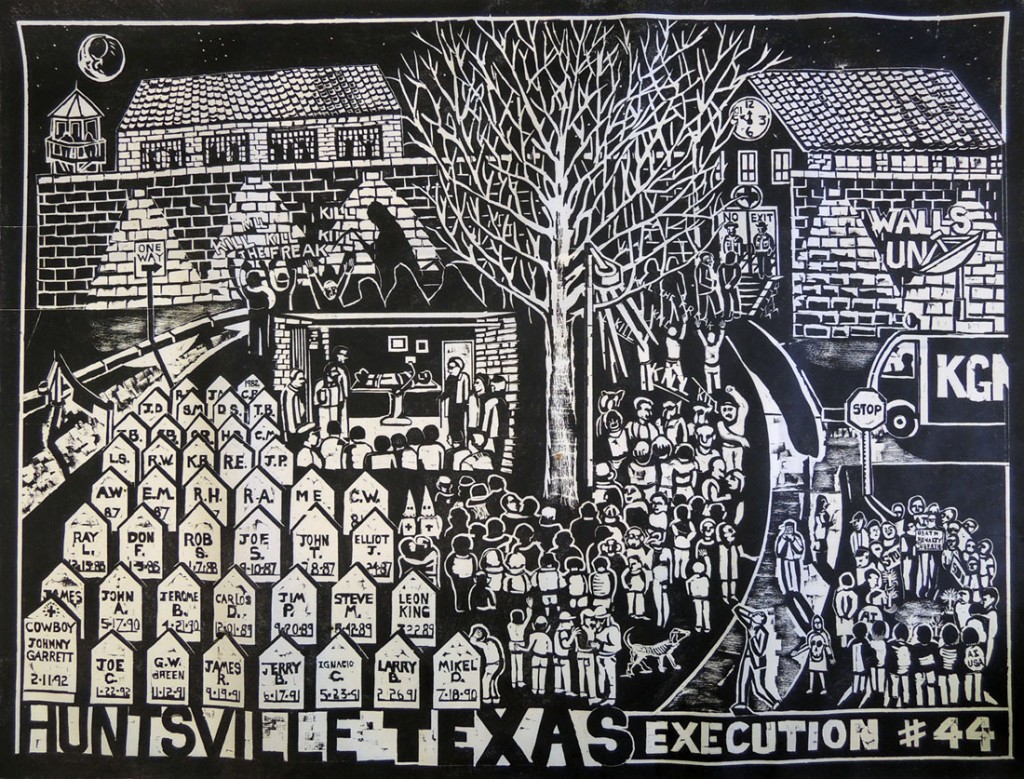
Eric Avery, Johnny Garrett is Dead, 1992. Woodcut on machine made Okawara paper. 36 x 48 inches. Edition: 10. Graphic Arts Collection GAX 2014- in process.
This print (and the Haitian Boat print above) were done when Dr. Avery was working as Amnesty international USA volunteer coordinator of AI’s refugee work in the Southern Region of the US. The theme of this woodcut is the execution of Johnny Frank Garrett, who was just 17 years old when he committed the brutal murder that sent him to death row. Amnesty International secretariat Mandy Bath described Garrett as “chronically psychotic then, a victim himself of unspeakable brutality throughout his childhood and formative years.” http://docart.com/catalog/Garrett.html
Avery writes “This woodcut depicts the scene outside the Texas Department of Corrections Walls Unit in Huntsville, Texas where Texas executes prisoners. In 1992, I along with about 20 Amnesty International members gathered outside the unit to protest the execution of Johnny Garrett. We are the group on the right side of the print. Under the winter tree, about 80 college students had come to celebrate the execution, to taunt us and to gloat over Johnny’s fate. The students were chanting “Kill the freak who killed the nun.”
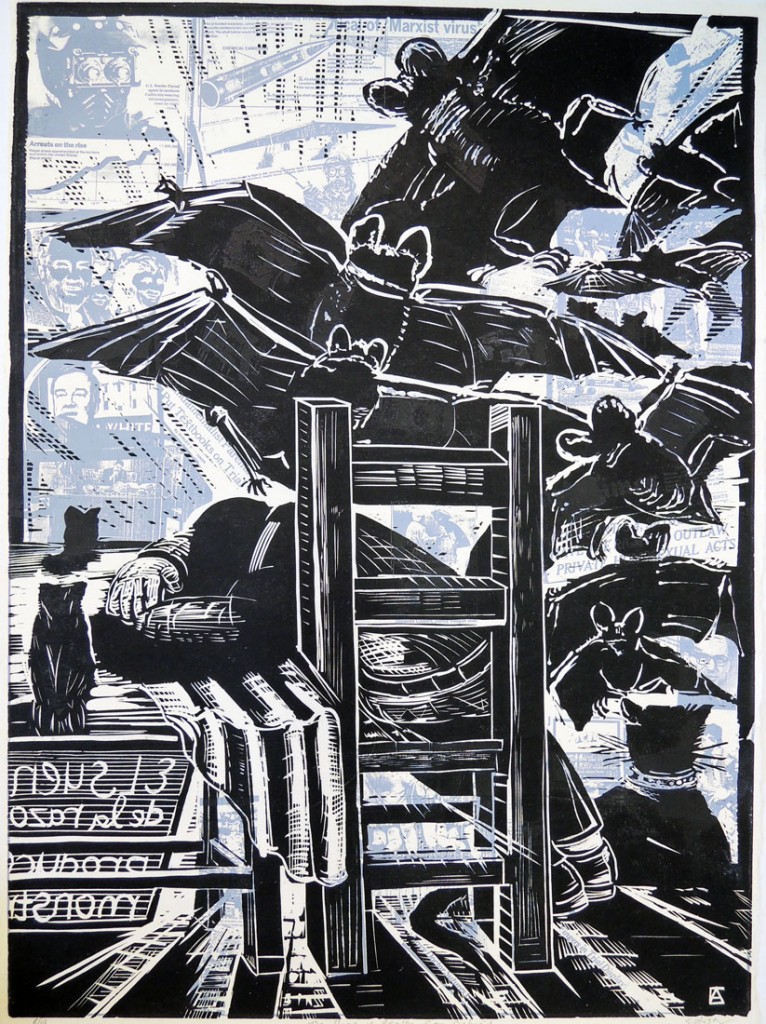 Eric Avery, The Sleep of Reason from Behind, 1986. Linoleum block print on photo silkscreen on handmade mulberry paper. 34 x 25 inches. Edition: 10. Graphic Arts Collection GAX2014- in process. After: Francisco José de Goya y Lucientes, El sueño de la razón produce monstruos (The Sleep of Reason Produces Monsters), 1799.
Eric Avery, The Sleep of Reason from Behind, 1986. Linoleum block print on photo silkscreen on handmade mulberry paper. 34 x 25 inches. Edition: 10. Graphic Arts Collection GAX2014- in process. After: Francisco José de Goya y Lucientes, El sueño de la razón produce monstruos (The Sleep of Reason Produces Monsters), 1799.
Avery writes, “In 1986, I appropriated Goya’s The Sleep of Reason to make a poster for the 15th ACLU Liberty Gala. I imagined myself standing inside Goya’s print, looking out at events (monsters) in 1986.”
“In the 1980’s I worked with Amnesty International USA on refugee problems in the United States. I am the slumped figure you see from the back in my print, exhausted from struggling with the human rights abuses happening in my world. During this time, many refugees were fleeing to the US from war in Central America. I lived near one of these refugee prisons in South Texas and had firsthand knowledge about effects of US policy had on refugee lives.”
“Many refugees were fleeing for their lives. Some had evidence of having been tortured. The United States Immigration and Naturalization Service was sending these people back to Central America. Amnesty International opposes returning refugees to countries where they face torture or execution. I worked against the INS policy and helped organize a community based refugee legal aid project in Laredo, Texas.”
“This was during the time Ronald Reagan was President. His Attorney General (also head of INS) was Ed Meese. The Border Patrol used night vision goggles, a new tool. The military establishment flourished during the eight years of the Reagan administration. An increasingly conservative Supreme Court supported States rights to ban private homosexual acts.”
“When you look at the print starting in upper right (Ronald Reagan swimming), and look clockwise – under Reagan are White South African Lawn Bowlers, New York Times headlines about Supreme Court banning homosexual acts, abortion protest. At the bottom, in El Salvador, hands are tied together by thumbs. Moving to lower left, an El Salvador military officer. At 9 o’clock is Reagan at his desk, Ed Meese above him (positive and negative images). In upper left is night vision goggles on Border Patrolman, then chemical weapons. In the center of the print is Nancy Reagan and Claudette Colbert playing on the beach.”
For more information: http://docart.com/catalog/sleep_of_reason.htm
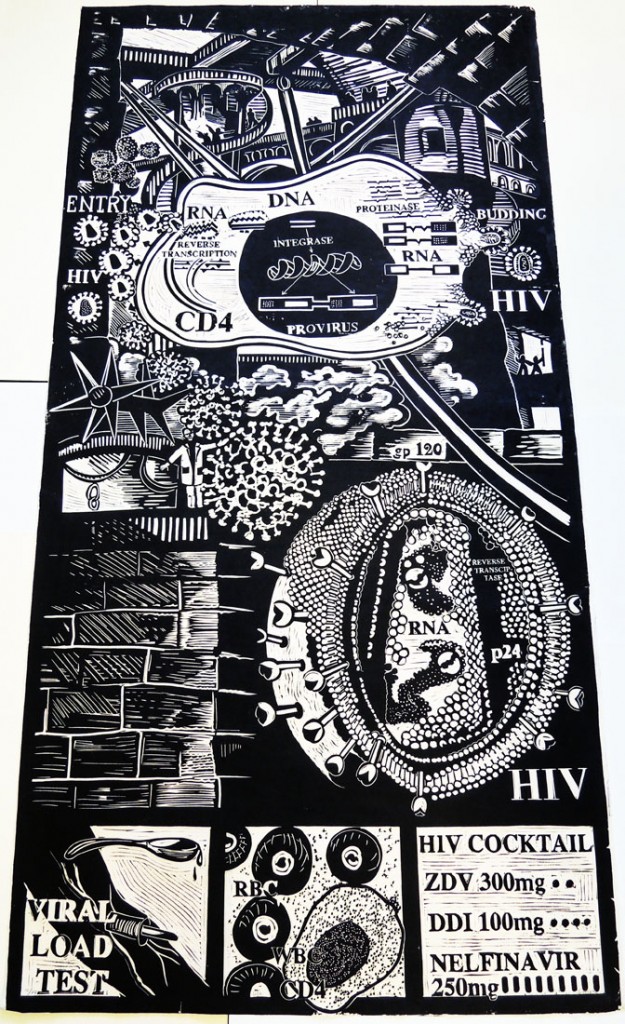 Eric Avery, Lifecycle of HIV Showing Sites of Actions of Medications, 1997. Linoleum block print on okawara paper. 72 x32½ inches. Edition: 20. Graphic Arts Collection GAX 2014- in process.
Eric Avery, Lifecycle of HIV Showing Sites of Actions of Medications, 1997. Linoleum block print on okawara paper. 72 x32½ inches. Edition: 20. Graphic Arts Collection GAX 2014- in process.
Dr. Avery writes, “After the Amnesty International human rights work, with my friends beginning to die form AIDS, I returned to medicine. I think it is important to contextualize my art/medicine in my academic medical and medical humanities career a the University of Texas Medical branch Galveston, where I was Clinical Associate Professor of Psychiatry and Member, Institute for the Medical Humanities.”
The Life Cycle of HIV was an art medicine action for 1997 World AIDS Day. The print also appears on the back cover of Pictures That Give Hope, which was printed in large editions and used in a number of US prison systems.
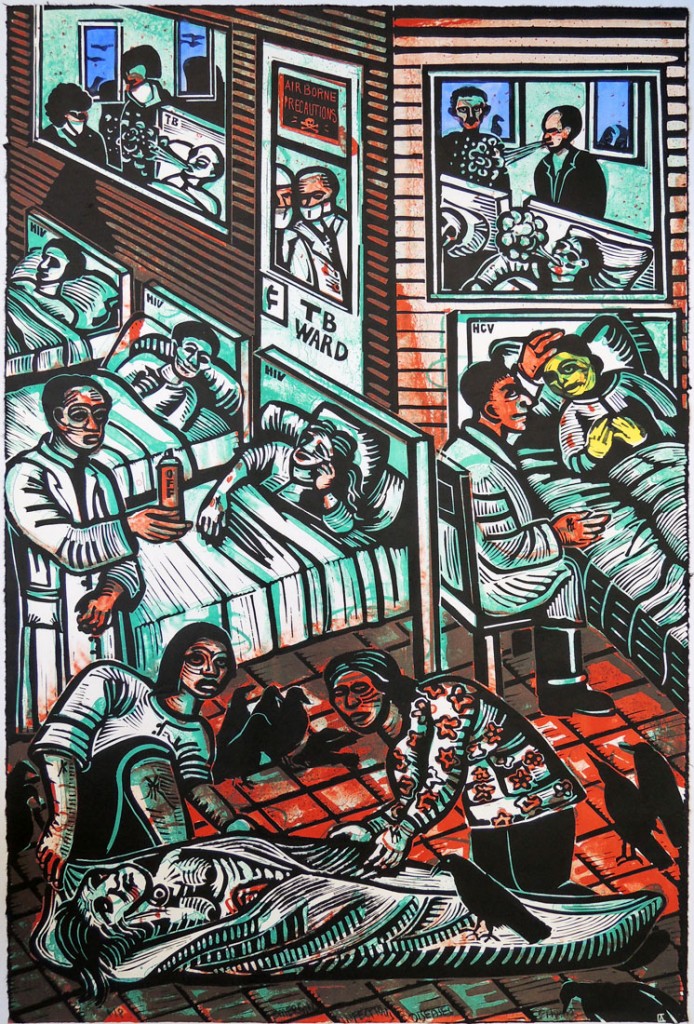 Eric Avery, Emerging Infectious Diseases, 2000. Linoleum block print over lithograph on Mulberry Paper. Printer Beauvois Lyons. 44 x 22 inches. Edition: 35. Graphic Arts Collection GAX 2014
Eric Avery, Emerging Infectious Diseases, 2000. Linoleum block print over lithograph on Mulberry Paper. Printer Beauvois Lyons. 44 x 22 inches. Edition: 35. Graphic Arts Collection GAX 2014
Emerging Infectious Diseases shows the vulnerable body infected by multi-drug resistant T.B., HIV, Hepatitis C and the very new United States infection West Nile Encephalitis.The print emerged after the West Nile Virus outbreak in NYC in 1999. This was the first time this virus was detected in the Western Hemisphere.
The image source for this print is a rare French woodcut that accompanied the poem “La Complainte et Epitaph de feu Roy Charles” in Octovien Saint-Gelais (1468-1502), Le vergier d’honneur, nouvellement imprimé à Paris… [Paris, ca. 1500], unfortunately not in the Princeton University Library. “The sick man is attended by a physician, the man receiving spiritual consolation, the corpse being prepared for burial, and the well man, about to leave, receiving a word of advice from a physician in the background.” –Carl Zigrosser, Ars Medica, 1959.
For more information on Eric Avery and his work, visit www.docart.com
Lady Ku Kluxers
In August 1921, newspapers across the country ran similar headlines announcing “Women are to be admitted to membership in the Ku Klux Klan.” (The Arizona Republican, The Atlanta Constitution, The Indianapolis Star and many others). The following year, various branches began to recognize women’s auxiliary groups, as reported in The Baltimore Sun, “Lady Ku Kluxers Form Newest Klan” (October 9, 1922).
Finally, in 1923 the formal Women of the Ku Klux Klan (WKKK) was established as a branch of the larger organization, with their headquarters in Little Rock, Arkansas. To qualify for membership, one had to be a native-born, white, Protestant woman (most often they were wives or relatives of Klansmen). Young ladies were organized under the title Tri-K for Girls.
The Graphic Arts Collection recently acquired a number of illustrated booklets, manuals, directories, certificates, sheet music, and other print ephemera around the WKKK. The material was collected in the southern United States over a number of years. Here are a few example:
Here’s a complete list:
Klan ephemera
Bal Masqué
Oliphant Down (1885-1917), Bal Masqué: a Fantasy in One Act (London: Gowan and Gray, 1924). Book jacket design by E.A. Taylor. Graphic Arts Collection 2014- in process
The Scottish artist Ernest Archibald Taylor (1874–1951) not only painted in oil and watercolor but also designed furniture, interiors, and stained glass. He trained at the Glasgow School of Art before taking a position with the design firm of Wylie and Lochhead.
Beginning in 1910, Taylor and his wife, Jessie M. King (1875-1949) spent several years living in Paris, where they ran an art school called the Shearling Atelier. Back in Scotland, they continued to teach, establishing a school at High Corie on the isle of Arran and an artists’ colony in Kirkcudbright.
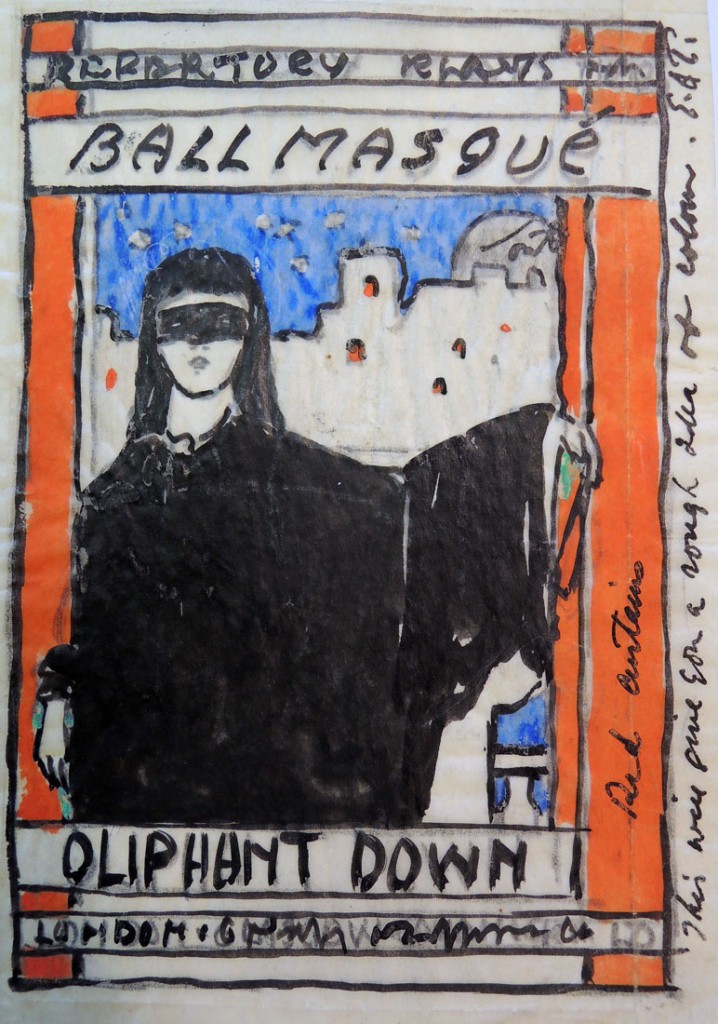
Taylor’s experience as a stain glass designer is evident in the cover design for the Scottish playwright Oliphant Down’s posthumous publication Bal Masqué. The Graphic Arts Collection recently acquired all of his preliminary drawings leading up to and including the final book. Notice the changes in the figure, in the background, in the typography, and in the color scheme.
Princeton also holds ten books designed by Jessie King, primarily children’s books in the Cotsen Library.
Hans Alexander Mueller
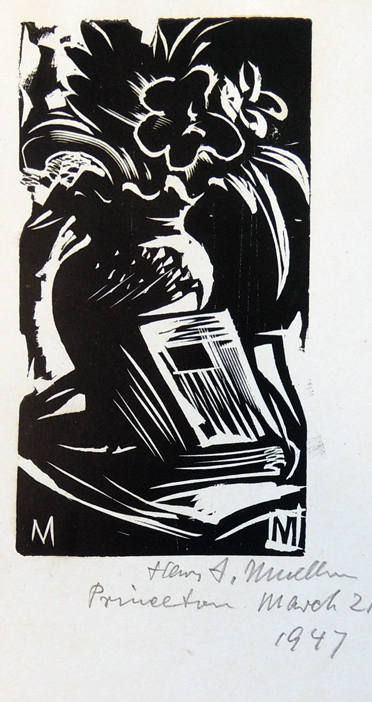 The December 4, 1939 issue of Life Magazine included a profile of the German American artist Hans Alexander Mueller (1888-1962), who had just published, Woodcuts & Wood Engravings: How I Make Them. It is surprising that a major magazine would be interested in highlighting a printmaker or a book on printing techniques. However, the fine press edition was printed by Elmer Adler’s Pynson Printers, with original woodcuts and wood engravings for the entire edition. Adler also gave Mueller an exhibition in the New York Times Annex on 43rd Street, which was reviewed in the Times, leading to the additional publicity. Today, it is somewhat unfortunate that we know Mueller primarily as the teacher of Lynd Ward (1905-1985).
The December 4, 1939 issue of Life Magazine included a profile of the German American artist Hans Alexander Mueller (1888-1962), who had just published, Woodcuts & Wood Engravings: How I Make Them. It is surprising that a major magazine would be interested in highlighting a printmaker or a book on printing techniques. However, the fine press edition was printed by Elmer Adler’s Pynson Printers, with original woodcuts and wood engravings for the entire edition. Adler also gave Mueller an exhibition in the New York Times Annex on 43rd Street, which was reviewed in the Times, leading to the additional publicity. Today, it is somewhat unfortunate that we know Mueller primarily as the teacher of Lynd Ward (1905-1985).
When Adler moved to Princeton and started the Princeton Print Club, Mueller was invited to demonstrate his printing techniques in 1947. As the audience watched, the artist cut and printed several prints, which were then given to the Club for their circulating collection. Two years later, Mueller was invited back to create the Club’s membership print for 1949, depicting the new Firestone Library.
“There have been many books on woodcuts,” wrote Ward for the book jacket, “but this one is without equal in its intrinsic quality. The woodcut artist is peculiarly dependent on the printing process for the realization of his full intent, and probably nowhere else in the world could this book have been produced with the full measure of care and high standard of craftsmanship that it is receiving at the hands of Elmer Adler and the Pynson Printers.”
Hans Alexander Mueller, Woodcuts & Wood Engravings: How I Make Them (New York: Pynson Printers, 1939). Graphic Arts Collection (GAX) NE1000 M87 1939q
Schönbrunn Gardens in Vienna
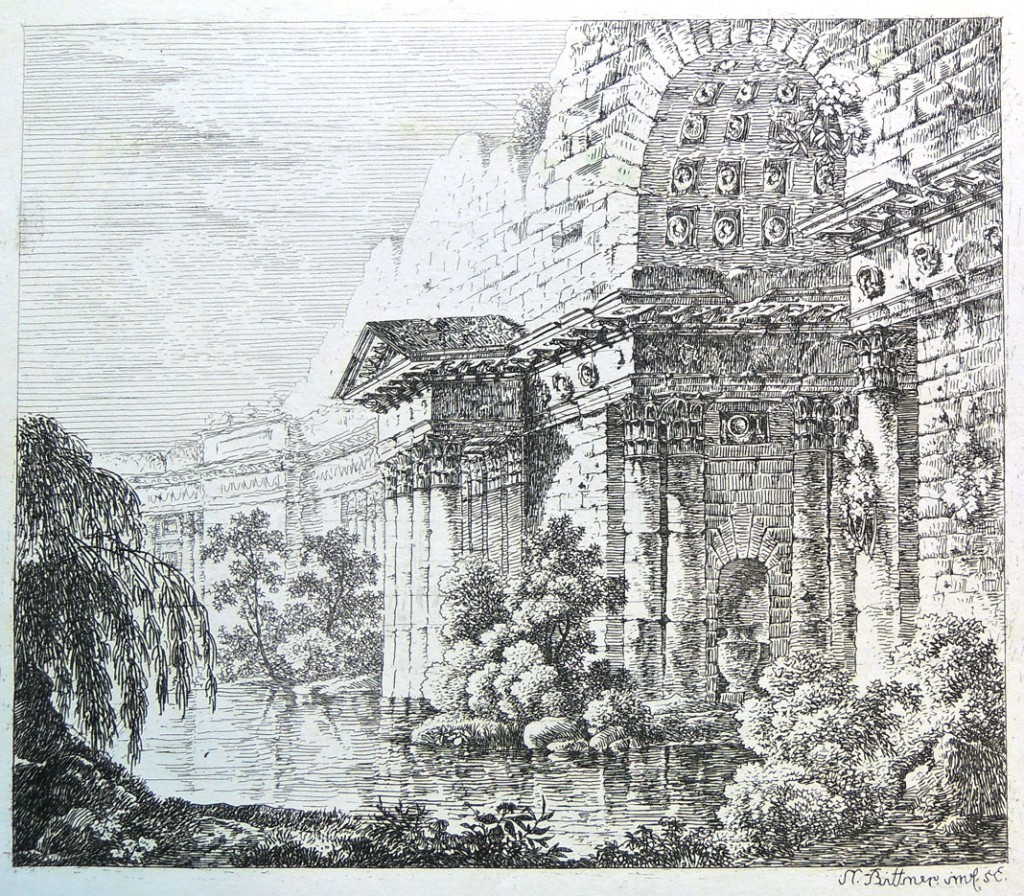
Norbert Bittner (1786-1851), Des Ruines de Schönbrun des[siné], gravés et dedié à Mr. de Pleban, Profeseur par N. Bittner, Archit. (Vienna, ca.1815]. Graphic Arts Collection 2014- in process. 8 etchings
The Graphic Arts Collection recently acquired this exceedingly rare set of eight prints on the ruins of the gardens of Schönbrunn in Vienna. So far, no other copies in libraries have been found (note: the originals are slightly darker than my photographs here). Originally known as the Ruin of Carthage, the Roman Ruin is a set of follies that was designed by the architect Johann Ferdinand Hetzendorf von Hohenberg (1733-1816) and erected as an entirely new architectural feature in 1778 in the Schönbrunn gardens in Vienna.
“Fully integrated into its parkland surroundings, this architectural ensemble should be understood as a picturesque horticultural feature and not simply as a as a ruin. The fashion for picturesque ruins that became widespread with the rise of the romantic movement soon after the middle of the 18th century symbolize both the decline of once great powers and the preservation of the remains of a heroic past.”
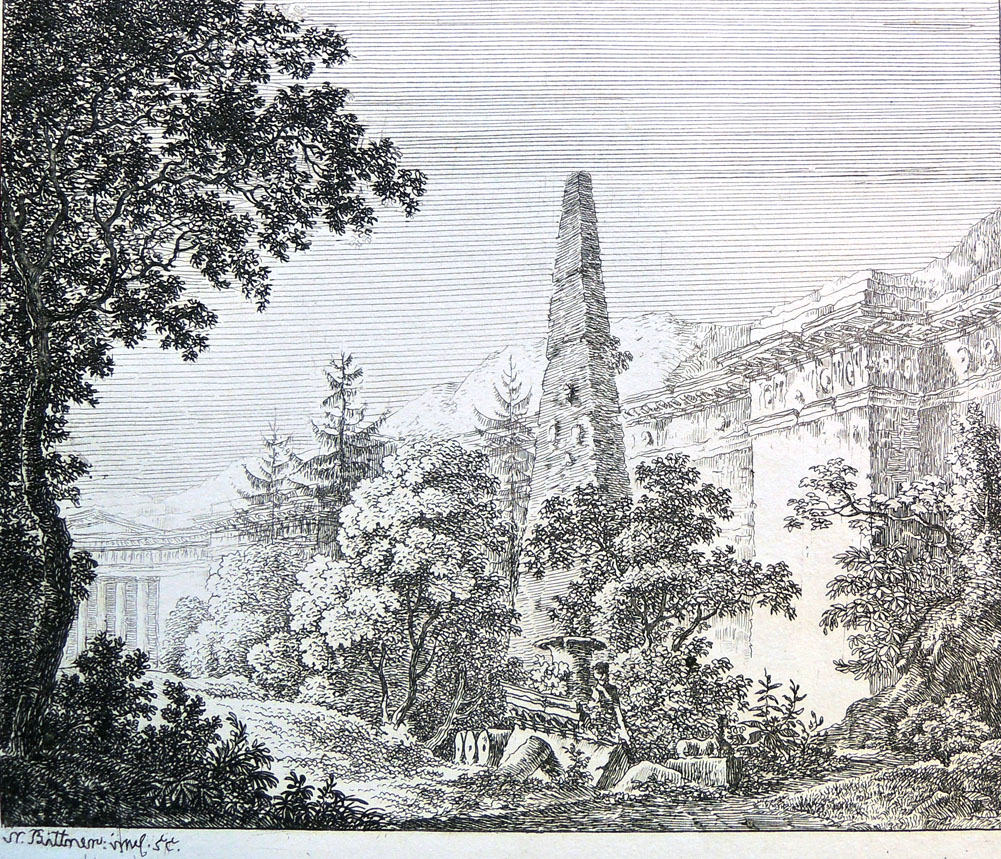
Born in Vienna, Norbert Bittner (1786-1851) was a painter, draftsman and etcher, trained in his hometown at the Academy of Fine Arts. Besides decorations and interiors prints (after A. de Pian) he left a large number of landscapes prints and watercolors, almost exclusively from the area in and around Vienna, as well as architectural representations and theater decorations.
Printing History II
Yesterday, we posted a new set of 19th-century metal printing plates telling classical stories with Latin captions. Today, several of the sequences have been identified.
My sincere thanks to Christina S. Kraus, Acting Chair, NELC. Thomas A. Thacher Professor of Latin, Yale University, and to Christopher Stray, Honorary Research Fellow, Department of History and Classics, Swansea University, for their help in identifying the stories. This will be a tremendous help in tracking down the published versions of these educational prints.
A.This is from Sallust, Bellum Jugurthinum chapter 93
1.MILES AQUATUM EGREDITUR
2.FACILIS ASCENSUS
3.UTILIS ARBOR
4.RAMIS MODO MODO SAXIS NISUS AD CASTELLUM HOSTIUM PERVENIT
5.OMNIA EXPLORAT
6.LAETUS REGREDITUR
B. Unidentified
1.ITER FACIENS
2.POSSUMNE?
3.EXPERIAR CERTE
4.FORTIS SENEX
5.CAPTUS
6.EXITUS MISERANDUS
C. Unidentified
1.LATRONES DELIBERANT
2.CALLIDUM CONSILIUM
3.LATRONES VENUMDANT
4.ILLE PORTAM RESERAT
5.EFFUGIT URSA
6.CANES LATRONEM LACERANT
D. This is from Livy 1.24 the battle of the Horatii and the Curiatii
1.FRATRES PRO PATRIA INTER SE PUGNANT
2.DUO ROMANI INTERFICIUNTUR
3.TERTIUS CALLIDE FUGIT
4.PRIMUM ALBANUM OCCIDIT
5.SECUNDUM OCCIDIT
6.TERTIUM OCCIDIT
E. This is from Caesar, Bellum Gallicum 4.24-6, the first landing in Britain
1.CLASSIS ROMANA
2.BRITANNI
3.ROMANI TERRENTUR
4.AQUILIFER FORTIS
5.MILITES SECUUNTUR
6.BRITANNOS FUGANT
F. This is from Livy 5.47 and thereabouts, Manlius and the geese during the Gallic sack
1.ROMANUS DESCENDIT
2.VESTIGIA GALLI VIDENT
3.NOCTU GALLI VIDENT
4.IAM IAM DORMIUNT
5.ANSERES VIGILES
6.SPES IRRITA
G. A late antique story; see also: http://storiesforpreaching.com/telemachus-and-the-colosseum/
1.GLADIATORES PUGNANT
2.INTRAT TELEMACHUS
3.FRATRES ESTIS
4.TELEMACHUS INTERFICITUR
5.SCELUS NEFANDUM
6.EXEUNT OMNES
Printing history
 The Graphic Arts Collection recently acquired seven 19th century metal printing plates for a yet unidentified text or project. The blocks are composed of sequences of six cells and the numbering on the sides indicates that several blocks are consecutive. The captions are in Latin and the pictures tell simple stories of Telemachus and other classical histories. If anyone knows these books or teaching broadsides, could you let us know?
The Graphic Arts Collection recently acquired seven 19th century metal printing plates for a yet unidentified text or project. The blocks are composed of sequences of six cells and the numbering on the sides indicates that several blocks are consecutive. The captions are in Latin and the pictures tell simple stories of Telemachus and other classical histories. If anyone knows these books or teaching broadsides, could you let us know?
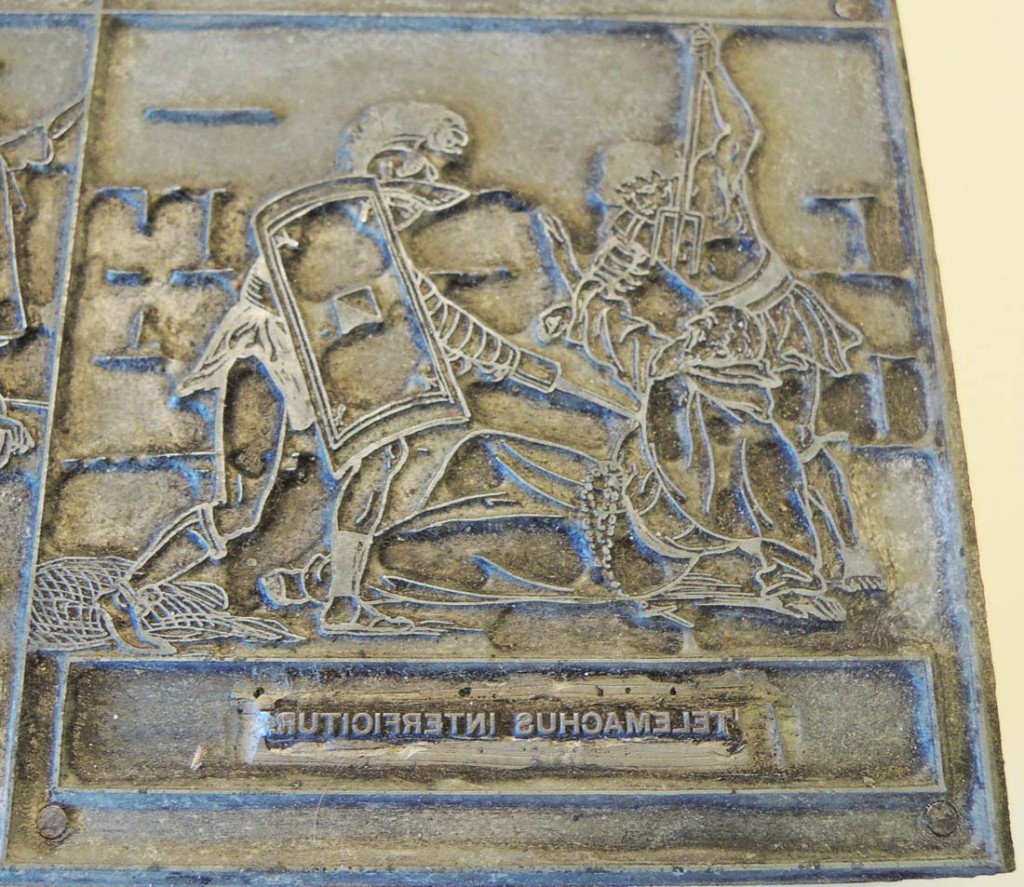
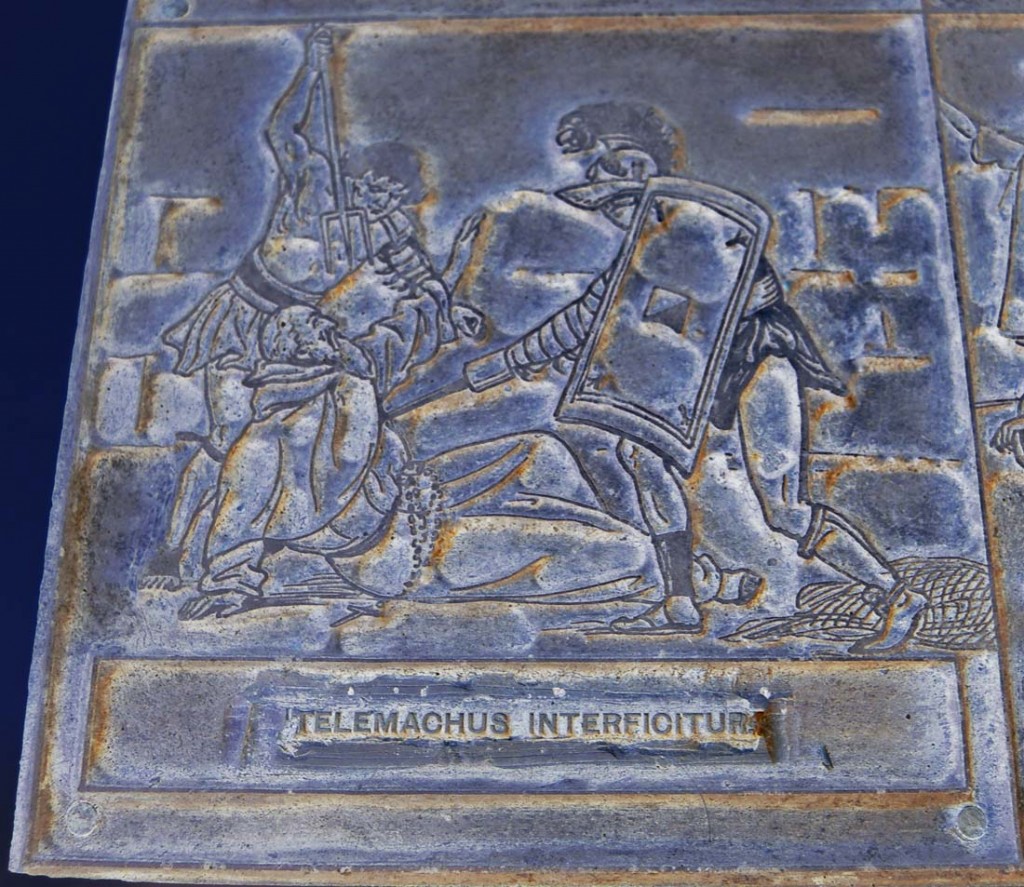 This block has been inverted and laterally reversed. The caption reads: Telemachus Interficitur.
This block has been inverted and laterally reversed. The caption reads: Telemachus Interficitur.
The same block laterally reversed, as it would be when printed. Caption: Milites sequuntur
The same block inverted and laterally reversed, note the figure. Caption: Experiar Certe
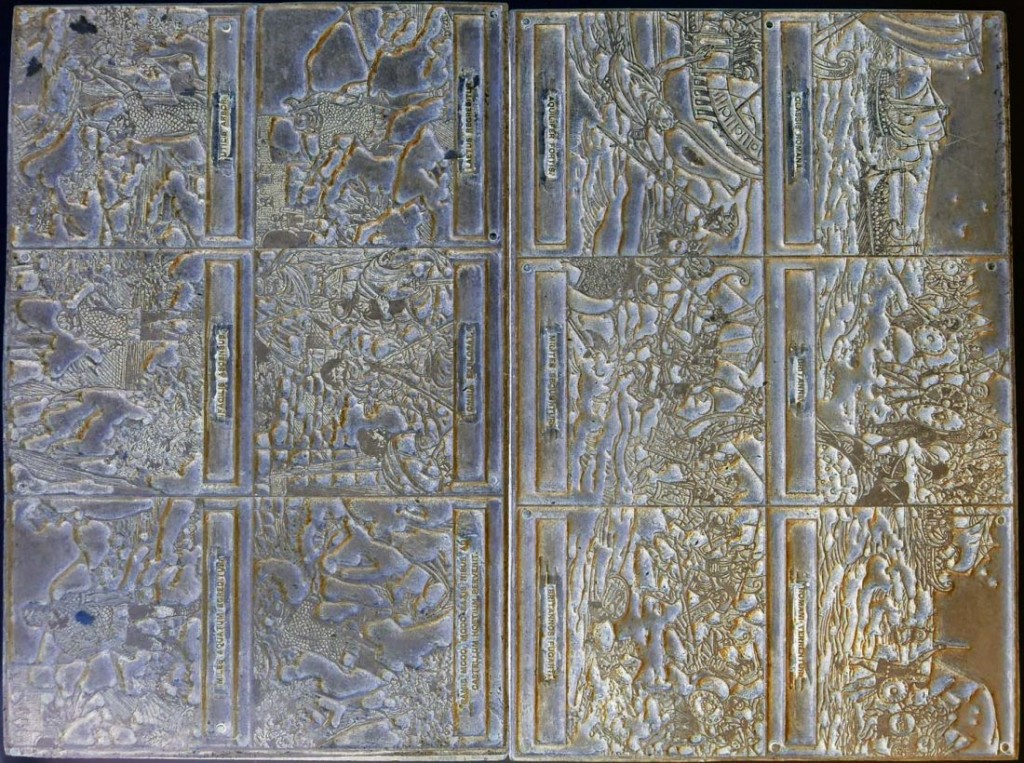
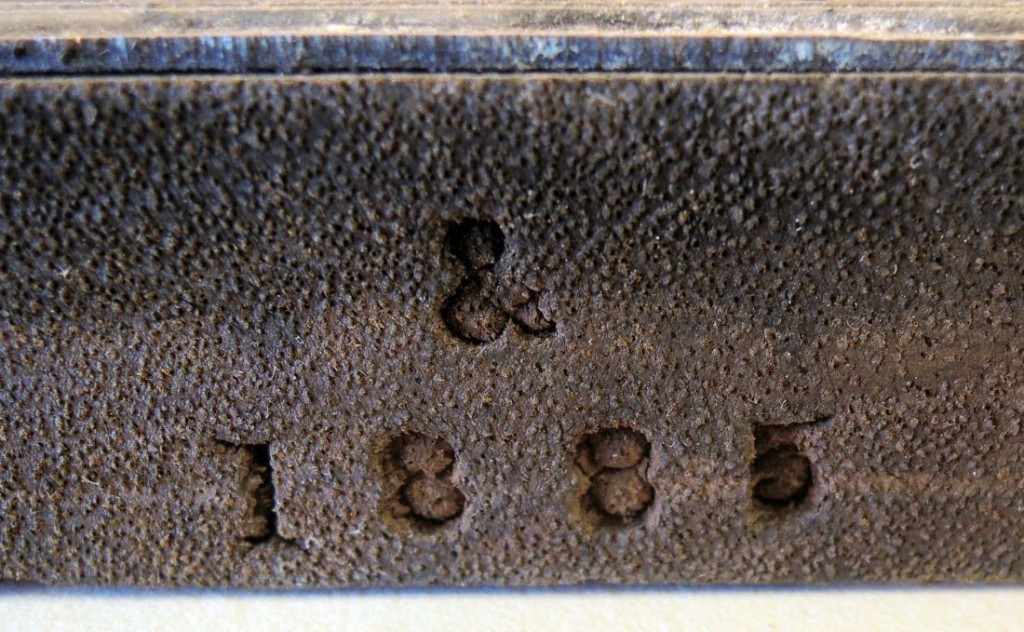
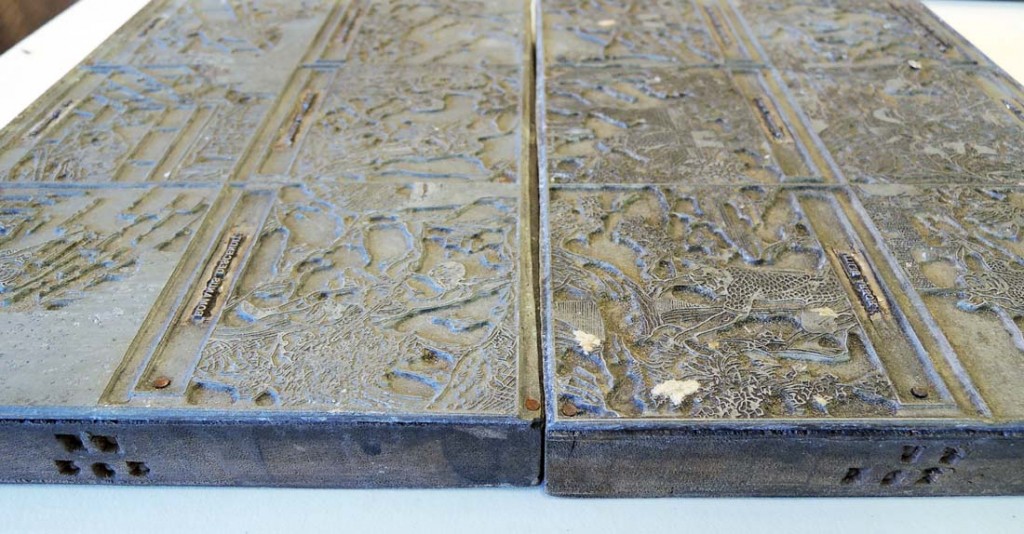 The marks on one side read: UU 361, 362, 363, 364, 365, 366 & 368. On the other side: 1883, 1885, blank, 1886, 1872, 1869 & 1871.
The marks on one side read: UU 361, 362, 363, 364, 365, 366 & 368. On the other side: 1883, 1885, blank, 1886, 1872, 1869 & 1871.
Catch and Release
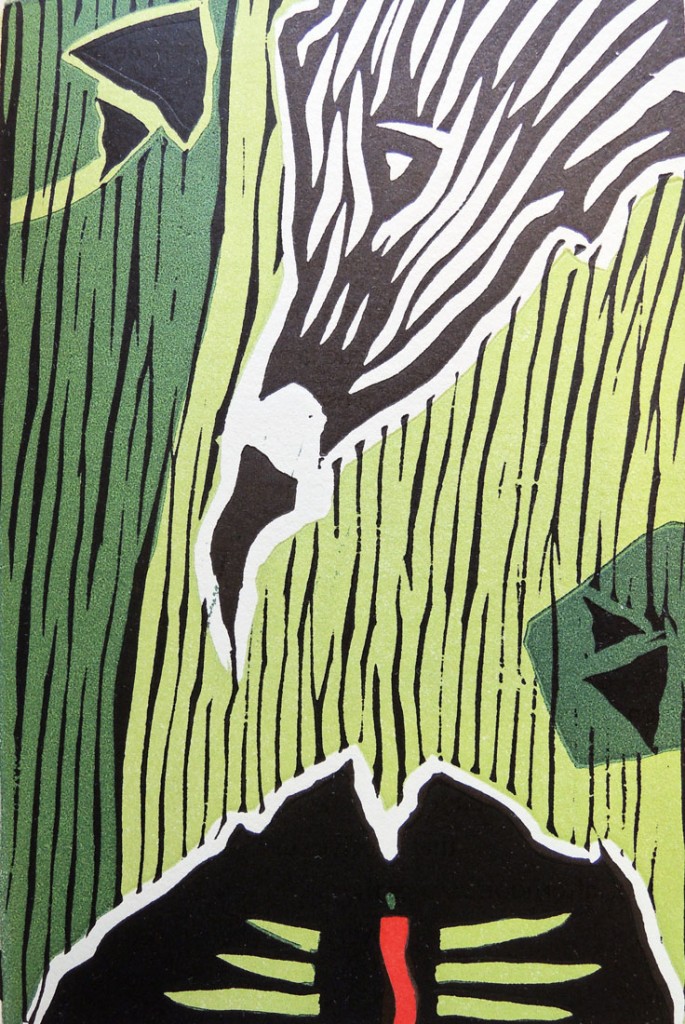
Reina María Rodriguez, Catch and Release. Linocuts by Alejandro Sainz (Tuscaloosa & Havana: Parallel Editions, 2014). Graphic Arts Collection 2014- in process. Gift of the author.
“This book is a collaboration between Cuban poet Reina María Rodríguez, as translated by Kristin Dykstra, Cuban artist Alejandro Sainz, and The University of Alabama. Faculty and students in the MFA in the Book Arts Program, School of Library & Information Studies, College of Communication & Information Sciences designed, letterpress printed, and bound the book.”–Last page. Alternating sections in black and gold type. Limited edition of 60 copies.
Adam Fuss, Mask
Mask was published in conjunction with the 2005 exhibition of photograms by Adam Fuss, held at the Baldwin Gallery in Aspen, Colorado. Twenty-five tritone reproductive plates are printed on stiff brown paper, housed in a cardboard slipcase. This first edition was limited to 1000 copies.
Exploring the rich iconography of African masks, Fuss placed the 3D objects directly onto light-sensitive paper, varying the exposure time to create eerie contrasts between light and shadow. What results are ghost-like images offering the hidden identities within these magical objects.
“In the midst of the digital age, Adam Fuss creates pictures of rare beauty and mystery with traditional and historical photographic techniques. Working without a camera, Fuss employs the 19th-Century photogram process involving the most basic elements of photography: objects and light.”—press release
